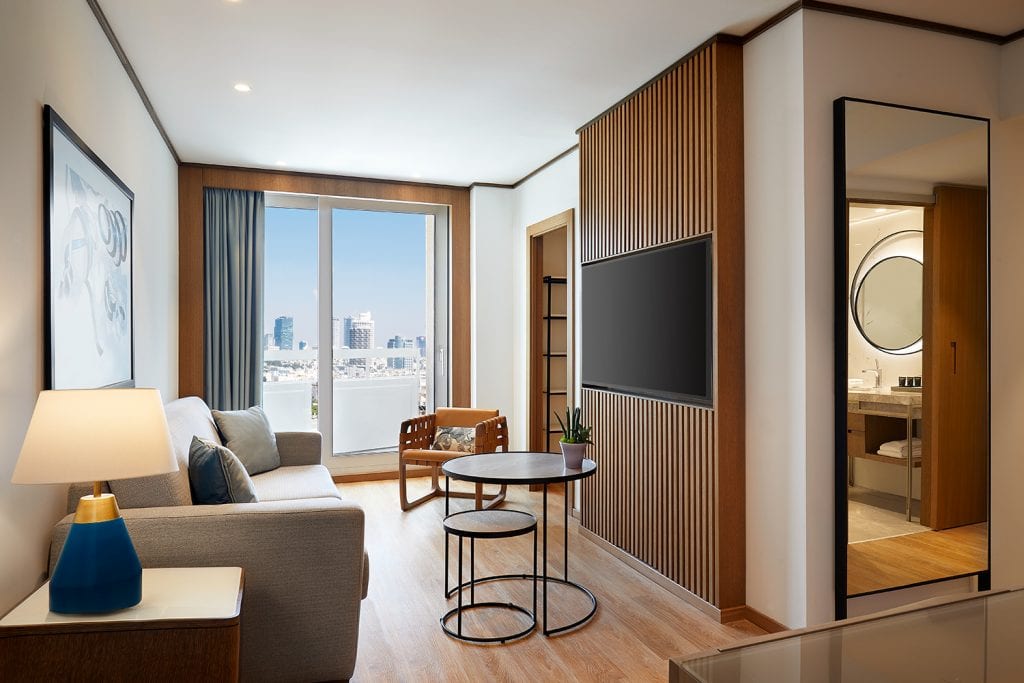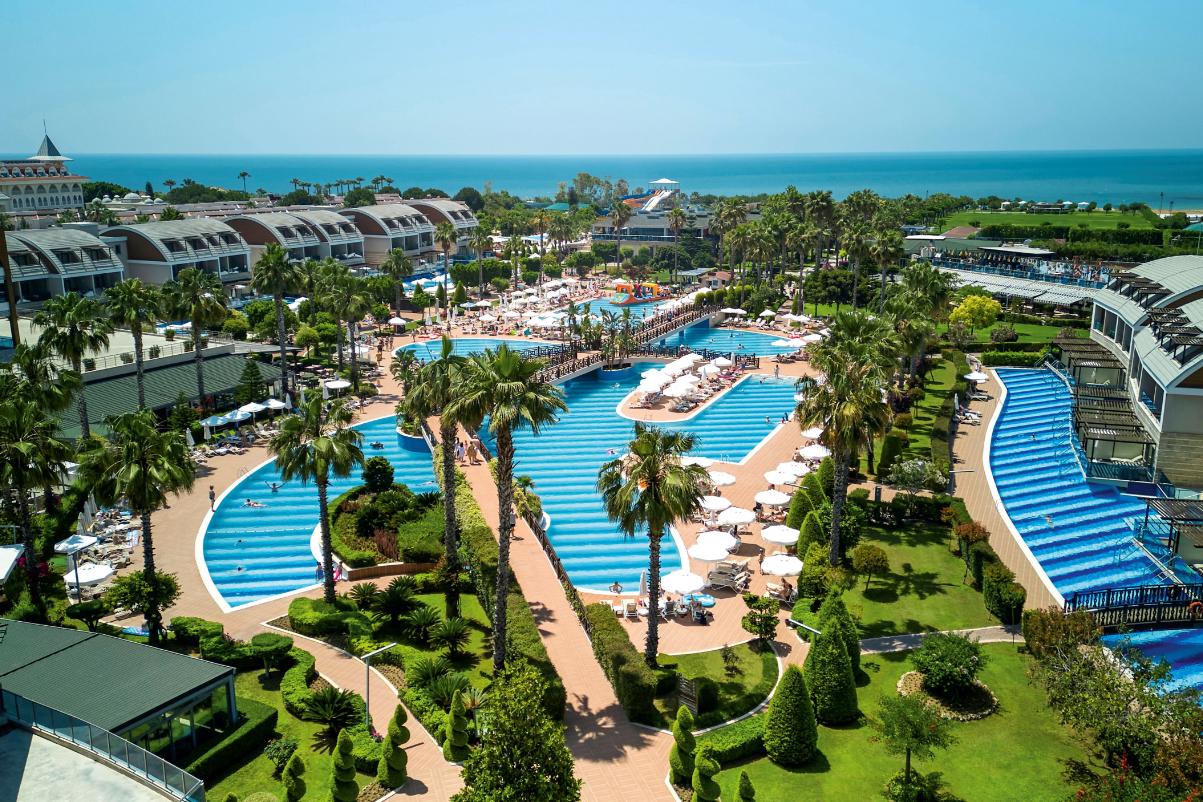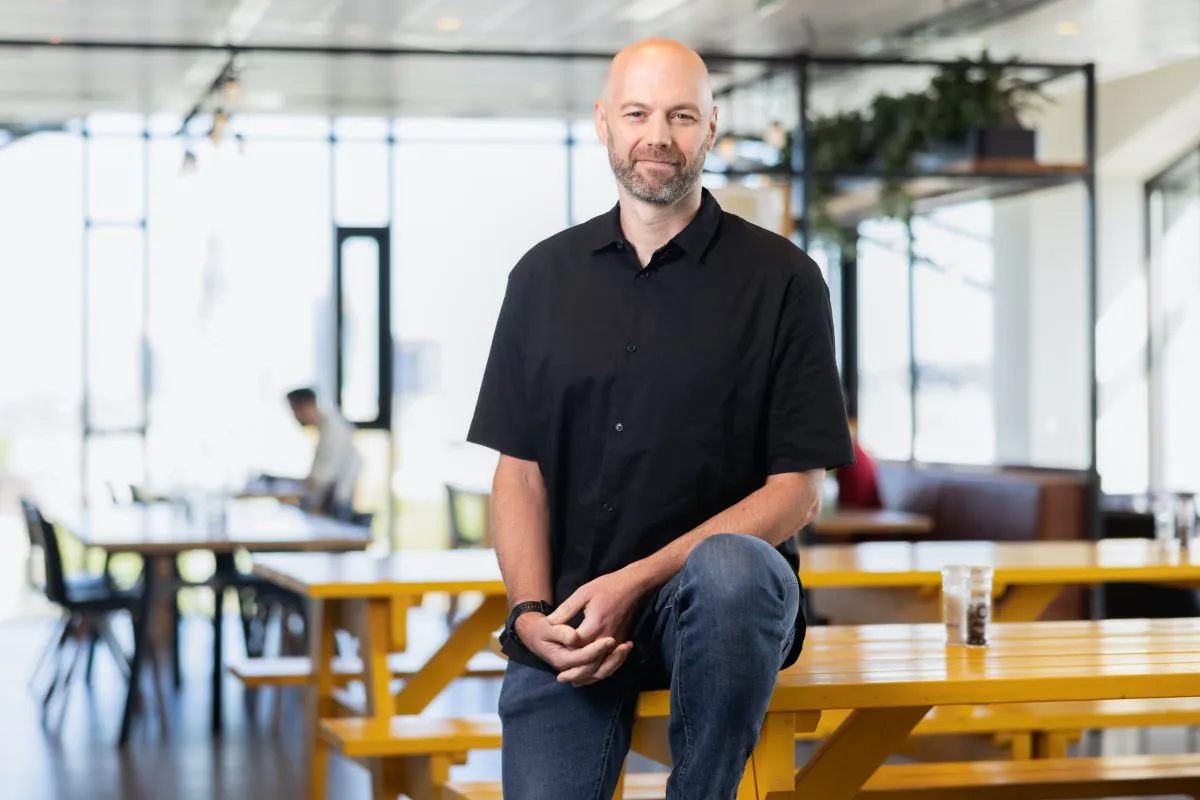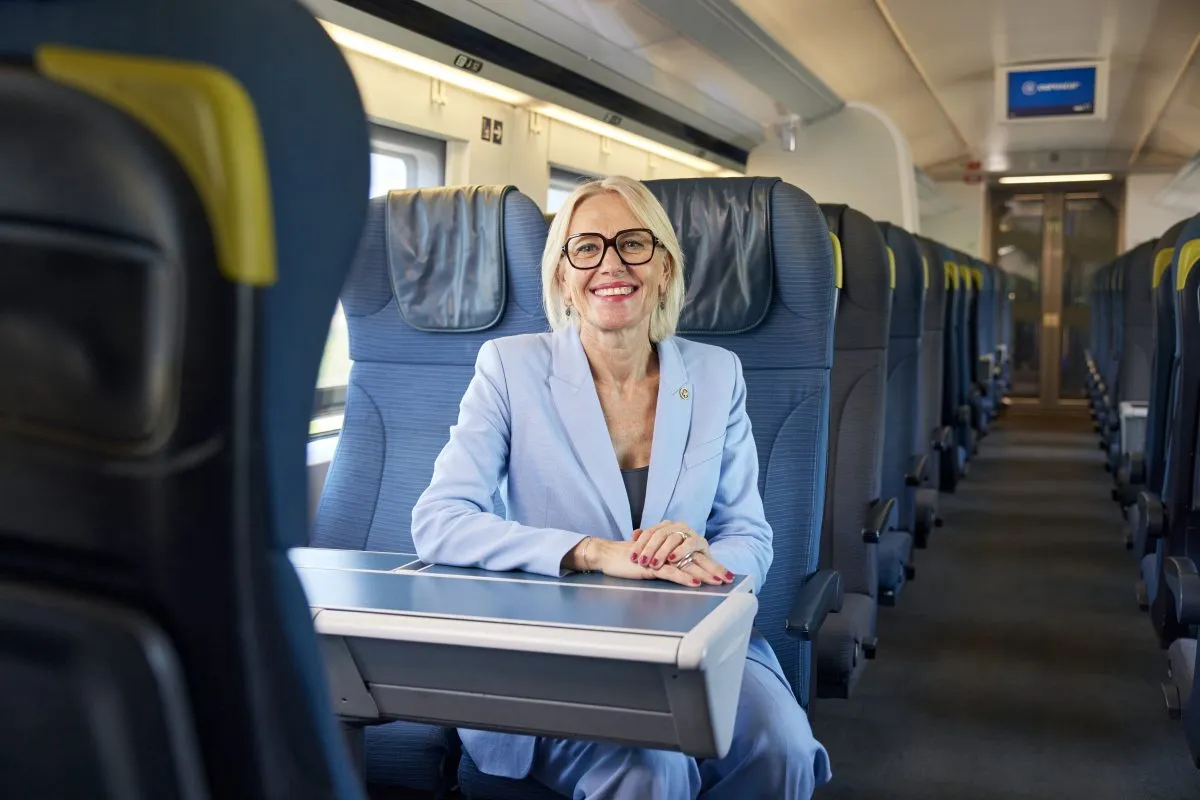Marriott Unveils Sheraton's New $1 Billion-Plus Look — Finally
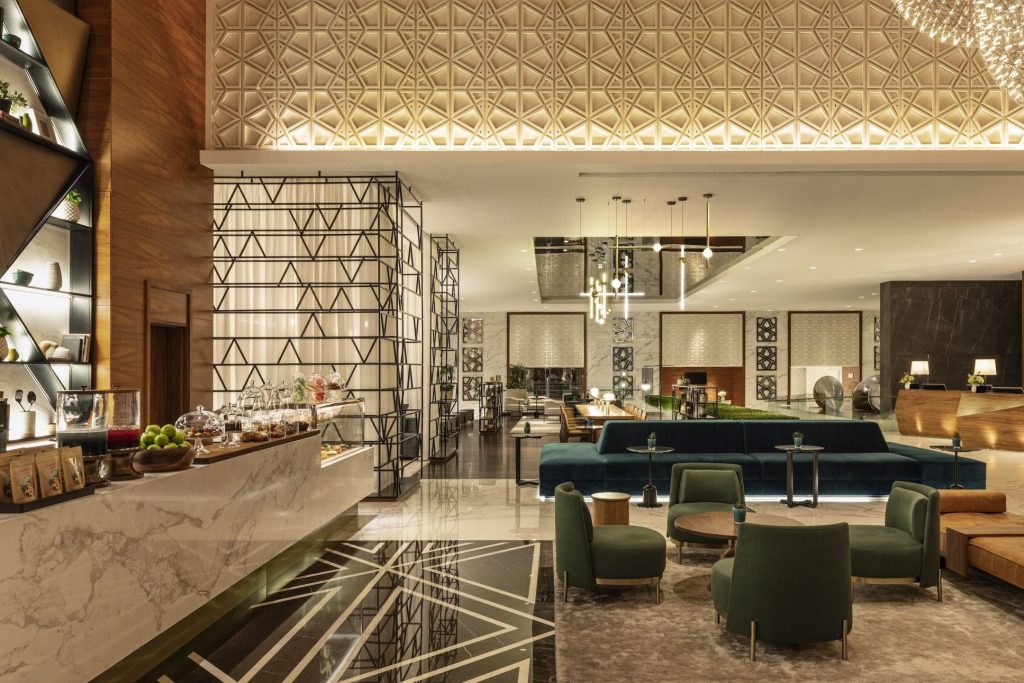
Skift Take
The new look of one of Marriott’s marquee full-service hotel brands has finally come to life, nearly three years after first getting announced.
Marriott unveiled on Thursday six Sheratons — two in the U.S., two in China, one in Dubai, and one in Israel — with the flagship brand’s new look, which has been in the works since 2018. The new branding emphasizes productivity in guest rooms and lounges. A town square feel in the lobby offers various places to work, dine, or grab a drink — which ideally drive additional revenue to owners.
A hotel facelift doesn't come cheap: Sheraton owners in North America alone could collectively spend close to $1 billion in upgrading to the new look if they all decide to move ahead with renovations. That doesn't factor in investments seen abroad.
Sheraton’s metamorphosis arrives at a time when brand distinction is critical in both the hotel industry as well as a company like Marriott, which has several directly competing full-service brands. To achieve the desired results, Marriott leaders say they couldn’t use their typical playbook.
“We tend to pilot and test a lot of things in North America because that’s where a bulk of our portfolio is. But with a brand like Sheraton, which is such a global brand and has quite a large international presence, we knew we weren’t going to do it that way,” said Amanda Nichols, senior director and global brand leader of Marriott’s Sheraton Hotels division. “It was important to work with our continent teams to design and guide the strategies as well as our owners globally.”
Sheraton, with locations in 72 countries, is Marriott’s most global brand, Nichols added. It is also Marriott’s second-largest full-service brand (after the company’s namesake) and third-largest generator of fees, behind Courtyard by Marriott and Marriott Hotels.
But it has also been the source of much industry criticism, even before Marriott acquired it through its 2016 takeover of Starwood Hotels & Resorts.
Analysts argue it lost its luxury appeal in the U.S. decades ago when the company, then owned by ITT, added roadside motels to its portfolio. It led to a disjointed brand where, in Asia, it was luxurious and, in the U.S., it was hit or miss. Starwood eventually beat out Hilton in acquiring ITT Sheraton in the late 1990s for nearly $10 billion.
“I think the one thing Starwood didn’t do enough of is they didn’t have the courage to say to hotels that were not meeting the standard, ‘You’re out,'” Marriott CEO Arne Sorenson told Skift in 2018.
It may seem like a bad time to move ahead with a branding overhaul, given the pandemic has decimated hotel occupancy rates and revenue and, therefore, available cash on hand for costly renovations. While it has slowed down the completion of some projects, Marriott leaders emphasize the new look also comes with efficiencies and cost benefits.
A new brand standard for the lobby, called the Coffee Bar Bar, could increase food and beverage revenue throughout an entire day. Owners also have the option of including the Veiled Bar, an upscale bar experience that isn’t required at all Sheratons. The new guest room buildouts come with a more than 20 percent savings compared to prior designs.
“We wanted to make sure it was a brand that could resonate with global appeal and local relevance,” Nichols said.
The Sheraton in downtown Denver was the first to get the brand refresh and was eventually joined by properties in Phoenix, Tel Aviv, Dubai, and the Chinese cities of Guangzhou and Mianyang. The goal is to have more than 40 renovations done by the end of 2022.
But with more than 400 hotels in the Sheraton system, it may seem like a very slow rollout for a plan first announced nearly three years ago.
“If you look at the Sheraton transformation, it’s pretty on par with previous brand refreshes within our portfolio,” Nichols said.
The updates are pacing at roughly the same rate as the renovations seen during the refresh of the Marriott Hotels brand, which was announced in 2012. Sheraton hotel refreshes will take place according to existing renovation cycles to allow owners time to budget for the upgrades and enable design teams around the world to better manage ongoing projects.
There is no set deadline for the entire portfolio to be in adherence to the new brand standards, but some well-capitalized owners are using the lull in business during the pandemic to speed up renovation timelines.
“We find a lot of our convention hotels, while we have the timeframe and owners have capital, some are moving ahead with renovations because they want to take this time where they have low occupancy … and really be ready when the convention and group business returns,” Nichols said.
Industry analysts predicted Marriott had a tall task ahead when it first announced the Sheraton brand overhaul. Some felt Sheraton was a concept that had lost its way and didn’t have a clear focus on what kind of customer it wanted to pursue.
Marriott leaders also indicated they expected to de-flag some properties as a result of the new look. Some of those owners have since moved to Four Points or Delta Hotels affiliation, Nichols said.
But this doesn’t mean Sheraton is narrowing its focus or only pursuing a more exclusive group of travelers. Marriott leaders emphasize it will continue to be a flagship brand that is in a variety of markets catering to the leisure, business, and meetings and events sectors.
“Sheraton is a power brand within our portfolio, and it serves such a diverse need and always has,” Nichols said. “While maybe that would be kind of exciting and sleek to say, ‘We only want to be in these places,’ that’s not the role of Sheraton, and that’s not the future we see.”
[UPDATE: Since publication, Marriott provided details on cost savings associated with the design. This story has been updated.]
